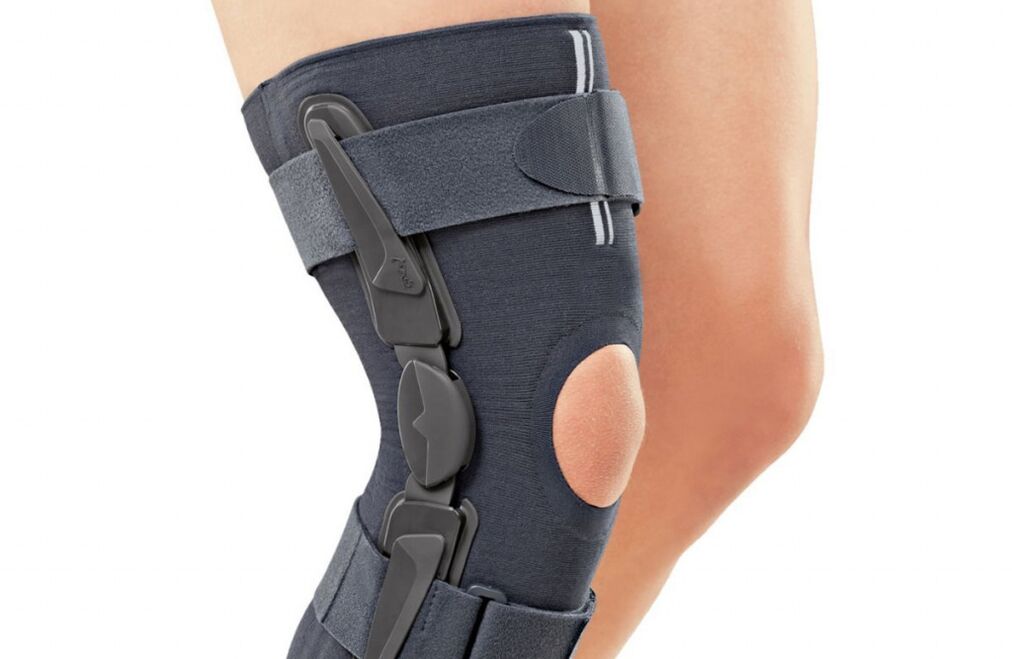
The good condition of the knee joint is important for normal movement. If there is any problem, disease or injury of the joint, musculoskeletal system, each step is accompanied by intense and sometimes unbearable pain in the knee. For the treatment of the knee joint, medications and the use of physical therapy are prescribed. Care must be taken to protect it from outside influences. For this, a knee brace was invented to fix the knee joint. Such devices are made of different materials, have different degrees of protection and have a wide range of applications.
Indications for using a knee brace
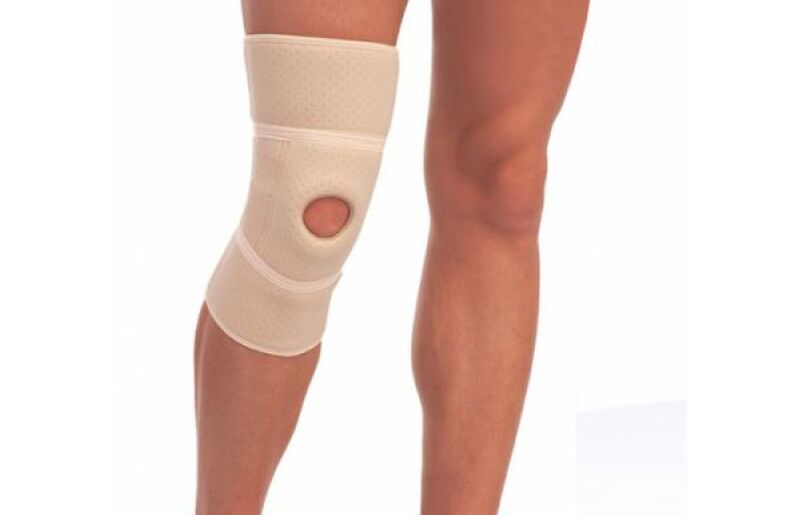
Such fixation devices are used not only to protect the affected joint, but also to reduce the load on it, as well as to normalize its functioning after injury and surgery. Knee pads can be used both for therapy (for example, with osteoarthritis) and for the prevention of various diseases. However, you can use the device only after consulting the attending physician, otherwise it will provoke a violation of the blood supply to the joint and aggravate the problem.
The use of knee braces is indicated for both the treatment and prevention of various pathologies. They are often recommended for athletes to wear to avoid injury. The fixation device is prescribed for therapy:
- arthrosis and arthritis;
- dislocations and subluxations;
- pathologies of a rheumatic nature;
- sprains;
- injuries and consequent joint instability.
Often, the use of a fixator is prescribed in the rehabilitation period after complex injuries or surgeries.
The use of an orthosis is recommended for the purposes of:
- discharge from the damaged knee joint. The device is recommended for people suffering from joint diseases, when any step is accompanied by unbearable painful sensations, which significantly delay recovery;
- prevention of pathologies and injuries. The use of knee pads and bandages for sports is mandatory for athletes, as well as for people working in the trade and construction industry. People who are overweight need to wear a special elastic knee brace;
- fixation of the injured knee joint. In this case, the use of a compression bandage is prescribed to help prevent further damage to the knee or meniscus, reduce pain and swelling. In this case, the fixation device is a kind of additional stabilizer for the joint;
- movement restrictions. For this, the use of a rigid bandage is prescribed, which completely excludes any movement.
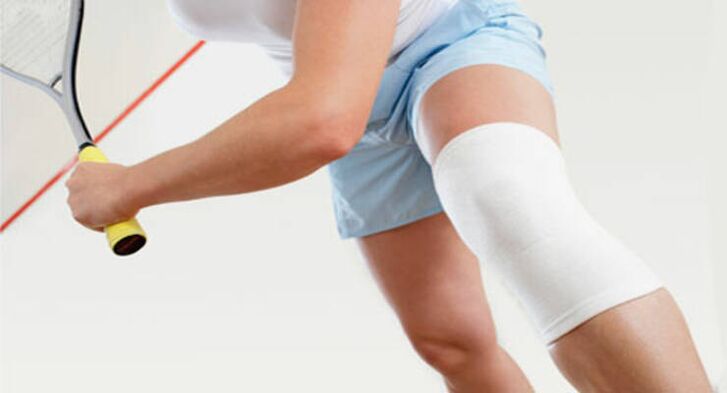
Knee pads help:
- Accelerating the healing process.
- Prevent meniscus and knee injuries.
- Strengthening the damaged joint.
- Keeping the patient moving.
- Reducing the pain.
- Improve lymph flow and blood circulation.
- Elimination of swelling.
- Minimization of inflammatory processes in the joint.
- Load reduction.
- Facilitate knee movement.
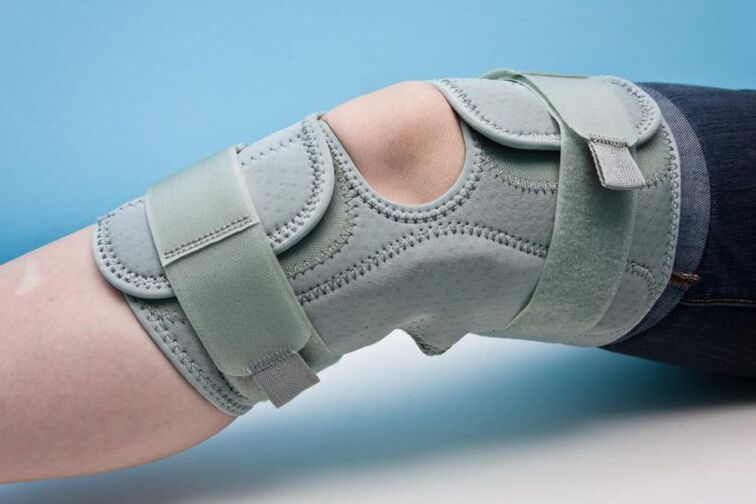
In addition, orthopedic fixators are an excellent alternative to impractical plaster casts.
What materials are brackets made of?
For the manufacture of orthoses, a considerable amount of materials is used. The most popular are:
- Dog fur. It is used to manufacture knee pads with heating effect.
- Cotton. It is used to give strength and elasticity to staples.
- Lycra, spandex, polyurethane - synthetic, elastic fabrics with high breathability.
- Neoprene. Elastic material that contributes to an excellent fixation of the knee joint. These knee pads are easy to care for. In addition, they have a warming effect.
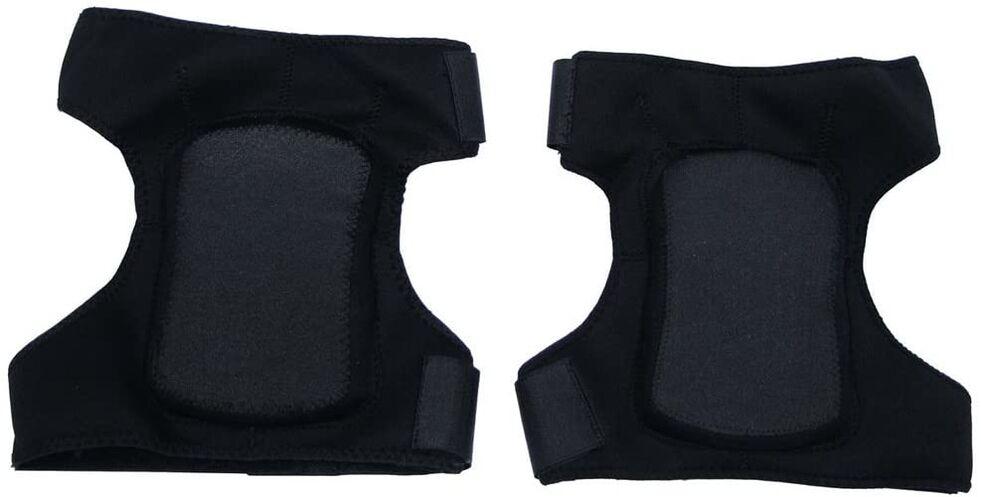
Devices for fixing the knee: varieties
There are a considerable number of models and types of this orthopedic device. They differ in the material they are made of. The knee brace can be open or closed, flexible or rigid. In addition, knee braces for the knee joint can be equipped with hinges, metal inserts, magnetic plates, silicone rings and even an infrared heating source.
Depending on the purpose of the product for fastening, they are presented in the following variations.
- Band Aid. Elastic corset that helps secure the knee area, warming up and reducing the load.
- orthosis. It has similarities to a bandage, but is more functional.
- Caliber. It is used for preventive purposes, helps to maintain the knee joint, prevents damage.
- Clamp. Rigid knee brace, which is used in most cases in the rehabilitation period. Assign these kneecaps to osteoarthritis.
- Tutor. A device in the form of a metal tire with a rigid attachment. Assign it after surgery or injury. For the manufacture of such knee pads, mainly soft materials are used. This device is hypoallergenic.
- Elastic knee pad. Lots of familiar, convenient and easy-to-use devices.
- Ribbon. Elastic adhesive tape. The task of the bandage is to help reduce the load on the muscular and ligament apparatus.
About the knee brace in detail
The bandage on the knee joint is used to easily fix the knee. The knee brace helps to minimize the load, but at the same time, these devices do not impede movement. For the manufacture of fastening means, cotton, synthetics and knitwear are used.
An orthosis is somewhat similar to a bandage. The main difference is the presence of additional elements in the first. These products are functional and help to fix the knee joint depending on the reasons. They can be equipped with rigid ribs and inserts, silicone rings, side hinges. You can fasten the knee brace with velcro.
A splint is a special splint whose main purpose is moderate or hard fixation. The device is much more convenient and practical than a plaster cast. In addition, by using a splint instead of a cast, the duration of knee function restoration is significantly reduced.
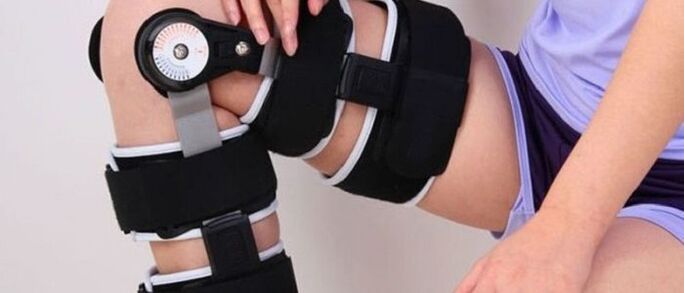
As for the brace, the main purpose of such a knee brace is the complete immobilization of the knee. The knee brace is equipped with hinges that allow the patient to move without straining the knee, as well as neoprene-coated reinforcements, which help to perform the necessary movements without injuring the meniscus. Such devices are used to secure the joint in conditions such as osteoarthritis and gonarthrosis, as well as when the meniscus is torn.
The tweezers are designed for people who are actively involved in sports and those who lead an active lifestyle. The compass helps to prevent the risk of various injuries, protects and fixes not only the joint, but also the lateral muscles and ligaments, the patella and the meniscus.
The elastic bandage was held in high esteem before the advent of modern fixation devices. It has been used during sports to prevent injuries as well as to minimize pain.

The tape is a single bandage equipped with a special adhesive surface. With the correct use of the product, it does not tighten the joint and does not restrict movements, on the contrary, it performs micro-massage on the skin. For the manufacture of such staples, mainly cotton is used. This product helps to minimize pain in the affected joint, swelling and bruising.
Recommendations for choosing a knee brace
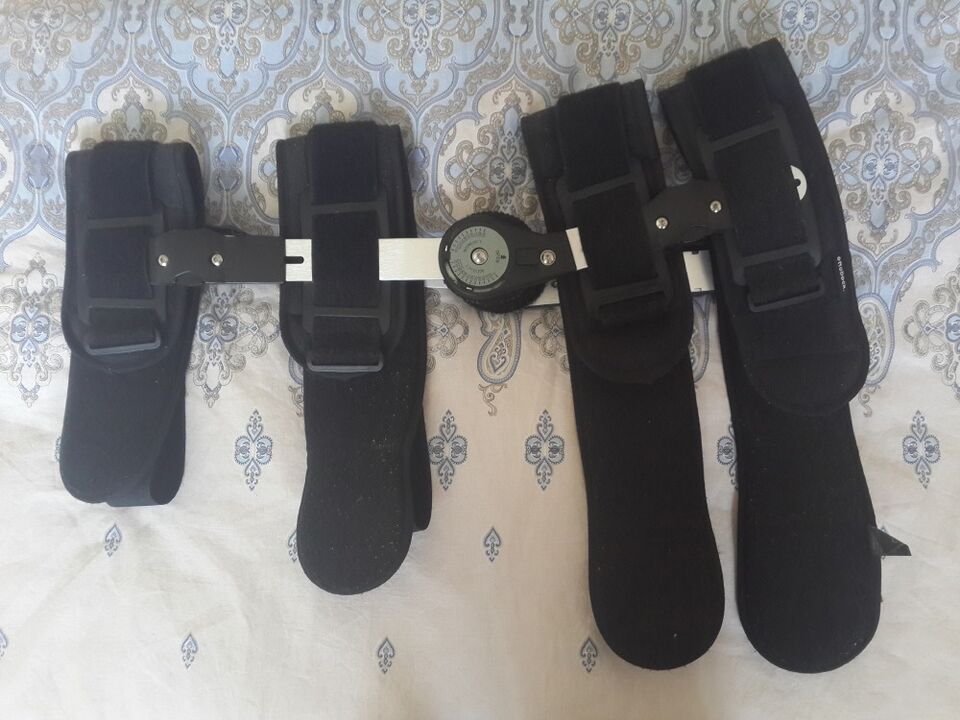
An orthosis for the knee joint is selected only by a qualified specialist and depending on the purpose of use. The knee brace must match the individual knee parameters. In no case is it worth choosing a device on your own, especially if there are complaints of pain. An incorrectly selected knee brace can be harmful. Ideally, the knee brace should fit the knee, fix the joint, but not squeeze it. If the product is large, it will slip and therefore not perform its functions.
You need to buy a bandage only in a specialized store. Orthotics prices vary by device manufacturer, model and functionality.
As for size, you can determine yours like this: measure your leg just above the knee (about six inches). If your hip circumference is 44 cm, your size is S, 44-54 cm - M, 54-60 cm - L, 60-67 cm - XL, 67 and over - XXL.
In order not to be confused by the size, be sure to measure the product before buying.
How to care for your knee pad
In order for the orthopedic knee brace to serve you for a long time and not lose its therapeutic and preventive properties, you need to take care of it and follow the rules of operation prescribed in the instructions.
- Do not wash the dressing in the washing machine.
- Do not iron the lock.
- Do not hang the product to dry. Place it on a flat surface. This way you avoid deformations and stretching of the orthosis.
- Do not use additional chemicals when washing.
You can use the dressing only after a doctor's prescription. If you play sports and decide to take care of the condition of your joints during exercise, it is advisable to buy an orthosis in the presence of a trainer. Don't wear a knee brace for more than three hours a day. Use it only during sports or exercise therapy.



































